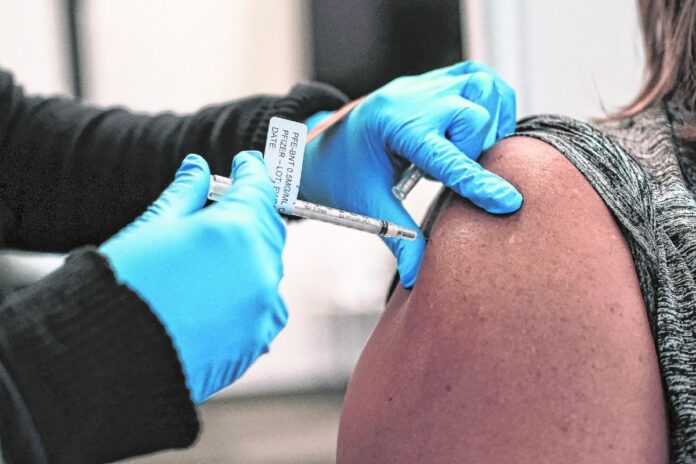
Local health officials are warning that despite COVID-19 cases and hospitalizations declining to among the lowest levels of the pandemic, Bartholomew County is still “definitely at risk” of a resurgence of the virus in the fall and winter months if more people don’t get vaccinated.
Most infectious disease experts agree that about 70% to 80% of the total population will need to be fully vaccinated to stop the uncontrolled spread of COVID-19.
In Bartholomew County, that would amount to somewhere between 58,645 and 67,023 people based on population estimates from the U.S. Census Bureau.
As of Friday morning, 39,248 Bartholomew County residents were fully vaccinated — about 46.7% of the county’s total population and 55.6% of those who are eligible, according to the Indiana State Department of Health.
However, vaccination rates have stagnated in recent weeks, raising concerns among local health officials.
“Most experts will tell you (that) we anticipate that there will be a resurgence again in the winter months, and it’s going to depend on your local immunization rates,” said Dr. Raymond Kiser, medical director of hospital care physicians at CRH. “If you look up in the Northeast, where they really are hitting 70% to 80% (vaccination rates), they’re probably going to do pretty well. If you live in a state or local population where you’re below that, you have a risk that you may end up having another wave come in.”
Though vaccination rates in Bartholomew County are higher than in many parts of Indiana, they still trail much of the U.S., particularly New England and parts of the West Coast, according to the Centers for Disease Control and Prevention.
At least 67% of Vermont’s total population is fully vaccinated, as is 63% of Massachusetts’ population — including 58% of Suffolk County, where Boston is located.
A total of 72% of the 258,826 people who live in Marin County, California, located just north of San Francisco, are fully vaccinated, including 82% of eligible people, federal records show.
And with virus cases lower than during the winter surge, local officials are concerned that people have let their guard down, particularly the roughly half of Bartholomew County residents who are not vaccinated.
Just 22 new cases of COVID-19 were reported in Bartholomew County from July 9 to 15, records show. Hospitalizations at CRH have declined since this past winter and have generally been hovering between one and three since early June, though there have been some days with no reported COVID-19 hospitalizations.
But last year, the county saw coronavirus infections and hospitalizations decrease in mid-June and mid-July before surging throughout the fall and peaking in early December, when CRH was nearly pushed to its limit with COVID-19 patients.
Kiser said he hopes that scenario will be avoided this year and feels confident that CRH can handle a potential resurgence.
“I feel much more secure that (CRH) is capable of dealing with whatever comes in, but I absolutely still have concerns that as long as we have (an) unvaccinated population out there, we absolutely may see again one of these waves.”
Additionally, more contagious and potentially more virulent strains of the virus that causes COVID-19 that have been confirmed to be circulating in Bartholomew County, including the delta variant, which has been blamed for overwhelmed hospitals in southwest Missouri and has some local health officials “a little bit nervous.”
CRH officials said earlier this month that the hospital system is keeping its eye on the delta variant, which was initially detected in India and is believed to be about 50% more transmissible than other strains, The Associated Press reported.
“If you’re somebody who has not had COVID and you have not been vaccinated, and now you get COVID, you may have a worse course than what we saw last year,” Kiser said.




